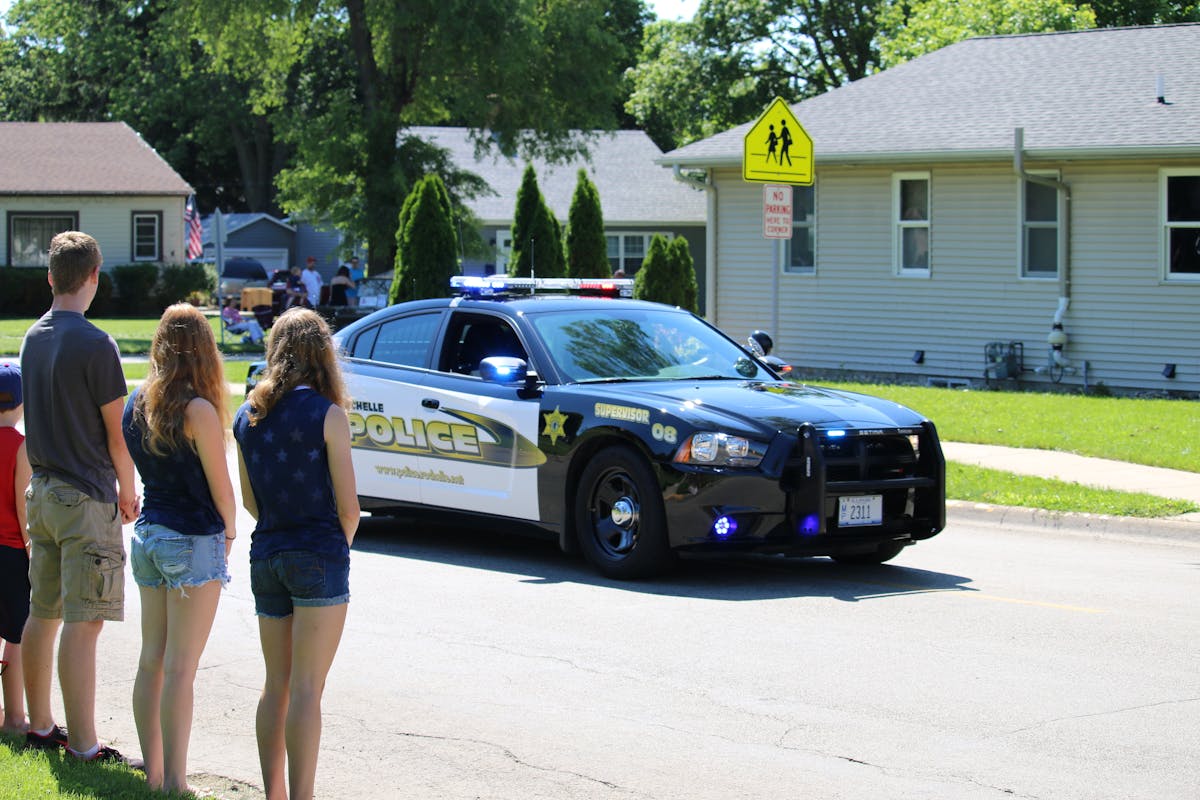California Vehicle Modification Laws
California’s strict laws regarding vehicle modifications, designed to guarantee both environmental safety and compliance, have sparked significant discussion among vehicle owners in the state. With regulations ranging from emissions alterations to specific standards for noise levels and window tinting, understanding these laws is essential for any Californian considering vehicle modifications. Non-compliance can lead to costly penalties and mandatory alterations, further highlighting the importance of this topic. As we navigate this complex regulatory landscape, the question arises: How can Californians modify their vehicles without falling foul of the law?
Understanding Vehicle Modification Laws
A significant number of vehicle enthusiasts in California engage in the practice of modifying their automobiles, making it vital to understand the state’s vehicle modification laws. These laws, designed with vehicle safety as a paramount concern, regulate the types of alterations permissible on cars and other vehicles.
In analyzing modification trends, it’s important to acknowledge that California has some of the most stringent vehicle modification laws in the U.S. These laws not only dictate permissible modifications, but also the process to have these modifications legally recognized. For instance, any alterations affecting safety or emissions require state approval and inspection to guarantee compliance with safety and environmental standards.
The focus on vehicle safety is evident in regulations concerning changes to critical components such as brakes, lights, and windows. Modifications that may obscure the driver’s view or compromise the vehicle’s structural integrity are typically prohibited.
Furthermore, laws exist to regulate aesthetic modifications, often popular among vehicle enthusiasts. For example, overly loud exhaust systems or certain underglow lighting are not permissible under California law.
Modifications and California’s Smog Check
In understanding California’s vehicle modification laws, the requisite smog check emerges as a pivotal area of focus. It is essential to elucidate the relationship between vehicle modifications and the impact they have on meeting smog check requirements. Additionally, guidelines for passing inspections with a modified vehicle will be a critical aspect of this discourse.
Understanding Smog Check Requirements
Maneuvering through California’s smog check requirements, especially with vehicle modifications, can often feel like traversing a labyrinth. However, a clearer understanding can be achieved by delving into the smog certification process and the emissions testing standards set by the state.
The smog certification process involves rigorous emissions testing to guarantee vehicles meet California’s environmental standards. The Bureau of Automotive Repair (BAR) regulates this process. Vehicles newer than 1976 must undergo biennial smog inspections, while certain vehicles are exempt. These include hybrids, electric vehicles, motorcycles, trailers, diesel vehicles 1997 or older, or gasoline powered vehicles 1975 or older.
The emissions testing standards, meanwhile, are stringent and multifaceted. They include functional inspection of emission control components, visual inspection for tampering, and tailpipe emissions test. All these components are evaluated under the “Smog Check” to guarantee ideal functioning and minimal environmental impact.
Understanding these requirements is vital for vehicle owners in California, especially those considering modifications. It is important to remember that any modification that alters a vehicle’s emissions system can potentially impact its ability to meet smog check requirements. As a result, it is advisable to consult with professionals before making any changes.
Impact of Vehicle Modifications
Maneuvering the world of vehicle modifications in California requires a keen understanding of the state’s strict smog check requirements. These regulations are implemented to control the excessive emission of pollutants that contribute to air pollution, posing significant safety concerns. Certain modifications, particularly those affecting the vehicle’s exhaust system, can result in higher emissions, thereby failing the smog check.
The impact of vehicle modifications extends to insurance implications as well. Insurers consider modified vehicles to be at a higher risk due to potential safety hazards and the increased likelihood of theft. Consequently, premiums may rise to reflect this increased risk. Additionally, some modifications may void the manufacturer’s warranty, thereby reducing the vehicle’s insured value.
Understanding these impacts is essential for vehicle owners considering modifications. Detailed knowledge of smog check requirements can guide the selection of modifications, ensuring they align with California’s rigorous environmental standards. Simultaneously, awareness of insurance implications can inform decisions, helping owners weigh the benefits against the potential increase in premiums and risk of warranty voidance. Ultimately, the impact of vehicle modifications underscores the importance of thorough planning and understanding of California’s vehicle modification laws.
Passing Modified Car Inspections
Frequently, vehicle modifications can put owners at odds with California’s stringent smog check requirements. These requirements are in place to guarantee that all vehicles on the road contribute minimally to air pollution. For owners of modified vehicles, passing the smog check is often a significant hurdle.
Modified vehicle inspections in California involve a detailed evaluation of the vehicle’s emission control systems. The inspection checklist includes examining the vehicle’s exhaust system, checking for any alterations in the engine, and testing the vehicle’s ability to meet emission standards. Any alterations that deviate from the original manufacturer specifications could potentially lead to a failed smog check.
Moreover, it’s important to understand that California has some of the strictest emission laws in the U.S. Vehicles that have undergone modifications, such as engine swaps or the addition of turbochargers, can often find these inspections particularly challenging. It is essential for vehicle owners to conduct a thorough review of their vehicle against the inspection checklist before the actual inspection, to guarantee compliance with state laws.
Legal Versus Illegal Exhaust Modifications
What exactly constitutes a legal versus an illegal exhaust modification in California? The answer lies within the boundaries of exhaust sound levels and emission standards, as regulated by California’s Bureau of Automotive Repair.
Firstly, the exhaust sound level is a major determinant of legality. According to the California Vehicle Code Section 27150 – 27153, all vehicles must have an adequate muffler to curb noise pollution. Any modification that amplifies the exhaust sound beyond 95 decibels, as measured by the Society of Automotive Engineers’ standards, is deemed illegal.
Secondly, emission standards play a pivotal role. The California Air Resources Board (CARB) sets forth rules for emission control and exhaust system modifications. Any alteration that increases vehicle emissions or undermines the functionality of emission control devices is prohibited. This includes, but is not limited to, modifications such as removing catalytic converters or installing ‘test pipes.’
In essence, while exhaust modifications may enhance a vehicle’s performance or aesthetic appeal, they must not infringe upon regulated exhaust sound levels or emission standards. Violations could result in hefty fines or mandatory vehicle modifications to restore compliance with the law.

Window Tinting Guidelines in California
As we progress through our evaluation of California’s vehicle modification laws, it is essential to address the specific regulations surrounding window tinting within the state. The understanding of these rules is critical for vehicle owners, given the potential penalties for non-compliance. Subsequently, we will analyze the legal stipulations, the rationale behind them, and the consequences for violations of these window tinting guidelines.
Understanding Tinting Regulations
Maneuvering the maze of California’s window tinting laws requires a keen eye for detail. Significant factors to take into account include tint darkness and tint reflectivity. Both variables are subject to distinct regulations to guarantee road safety and law enforcement visibility.
The tint darkness, or VLT (Visible Light Transmission), refers to the amount of light that can penetrate the tinted window. California law dictates that the front windshield and front side windows must allow more than 70% of light into the vehicle. However, there are no restrictions for the rear side windows and rear windshield.
Tint reflectivity is another important factor. Reflective tints can reduce glare and heat, but they can also cause visibility issues for other drivers. California law prohibits the use of red, amber, gold, or silver tint on the front windshield and front side windows. Other restrictions on tint reflectivity may vary depending on vehicle type.
Understanding these tinting regulations is essential for any motorist contemplating vehicle modifications in California. Doing so not only guarantees compliance with the law but also assures the car modification enhances safety and aesthetics without compromising on either.
Penalties for Non-Compliance
While California’s vehicle modification laws are designed to guarantee road safety and law enforcement visibility, failure to comply with these regulations can lead to significant penalties. Non-compliance with window tinting guidelines, for example, can attract fines and fees as well as other legal repercussions.
For first-time offenders, a fine ranging from $25 to $197 may be issued, depending on the county. Subsequent violations may lead to escalated fines and potential misdemeanor charges. Particularly, in some cases, these fines can be waived if the violation is corrected within a specified period.
The legal repercussions extend beyond financial penalties. As per California law, vehicles with illegal modifications may be impounded until the issue is rectified. This can be both inconvenient and costly for the vehicle owner. Additionally, multiple violations can lead to points on your driving record, which may increase your insurance premiums and even result in license suspension.
The severity of these penalties underscores the importance of adhering to California’s vehicle modification laws. It is essential for vehicle owners to guarantee compliance not only to avoid these punitive measures but also to contribute to overall road safety and law enforcement visibility.
The Laws About Suspension Alterations
Often, vehicle enthusiasts in California consider altering their vehicle’s suspension to enhance its performance or aesthetics. However, it is essential to understand the legal parameters that govern such modifications to avoid non-compliance with the state’s stringent vehicle modification laws.
California Vehicle Code Section 24008 stipulates that no person shall alter the suspension system of a vehicle in such a way that it causes the vehicle’s chassis or body to come in direct contact with the ground, expose the gas tank, or cause the wheels to come in contact with the body under normal operation. This law affects various suspension types, including hydraulic, air, and coil suspensions.
Furthermore, the ride height or ground clearance of a vehicle is another vital factor regulated under the state law. As per Vehicle Code Section 24008, the minimum ride height should be dictated by the lowest portion of the rim of the wheel in contact with the ground. The law further states that any alteration that raises or lowers the vehicle’s height beyond the manufacturer’s specified limit is prohibited.
To conclude, while suspension modifications may enhance a vehicle’s appeal or performance, they must be executed within the boundaries of California’s vehicle modification laws.
Engine Swaps: What’s Permitted?
Delving into the domain of engine modifications, California’s vehicle modification laws have specific regulations regarding engine swaps. These rules are primarily designed to guarantee safety, engine compatibility, and compliance with emission standards.
In California, all engine swaps must be of the same year or newer than the vehicle being modified. Older engines are typically not as efficient and emit more pollutants, which goes against the state’s strict emission standards. It is essential to note that swapped engines must also retain all their original emission control equipment.
Performance enhancements are another area where regulations come into play. While boosting a vehicle’s power may improve speed and handling, it can also lead to increased emissions. Consequently, any performance enhancements must not interfere with the vehicle’s ability to meet emission standards.
Furthermore, the California Air Resources Board (CARB) requires that all engine swaps be inspected and certified by a state referee station to verify compliance. Any non-compliance may result in penalties, including fines and the possibility of vehicle impoundment.
Lighting Regulations for Modified Vehicles
Shifting our focus to another aspect of vehicle modification, lighting regulations in California also come with their own set of rules. These rules distinctly outline the acceptable parameters for modifications involving lighting systems, in particular LED headlights and underglow lights.
LED headlights, well known for their energy efficiency and longevity, are legal in California. However, they must adhere to specific regulations regarding brightness and color. According to the state’s Vehicle Code Section 25950, the only acceptable colors for headlights are white or yellow. Any deviation from these colors is considered unlawful.
Underglow lights, though popular among car enthusiasts for aesthetic reasons, face stricter regulations. While underglow lights are not explicitly prohibited in California, Vehicle Code Section 25102 VC stipulates that any light visible from the front of the vehicle must be white or yellow. This implies that underglow lights in any other color visible from the front are illegal. Additionally, Vehicle Code Section 24003 VC prohibits lighting systems that may dazzle other drivers on the road.
Penalties for Unlawful Vehicle Modifications
Despite the widespread appeal of vehicle modifications, it is crucial to understand the potential legal implications associated with non-compliance to California’s modification laws. Unlawful modifications, which do not meet the state’s strict standards, can lead to significant penalties. These penalties serve as strong deterrents to prevent vehicle owners from making modifications that may compromise safety, environmental standards, or aesthetic regulations stipulated by both federal and Californian laws.
Enforcement agencies in California take unlawful modifications very seriously. The penalties can range from minor fines to more stringent repercussions such as impoundment of the vehicle, license suspension, or even jail time in severe cases. The severity of the penalty is often determined by the nature of the modification, the degree of deviation from the approved standards, and the offender’s previous track record.
In essence, the penalties for unlawful vehicle modifications in California are designed to promote safety and uniformity on the roads. Non-compliance not only poses a risk to the driver and passengers but can also have far-reaching implications on other road users. Consequently, vehicle owners are advised to acquaint themselves with the existing laws and regulations to avoid potential legal consequences.
Frequently Asked Questions
What Are the Penalties for Repeat Offenders of Vehicle Modification Laws in California?
Repeat offender penalties escalate under the law, involving hefty fines, potential jail time, and possible impoundment of the vehicle. These vehicle modification consequences serve as a deterrent to continual non-compliance with established regulations.
Are There Special Permits for Modified Vehicles Used for Car Shows or Races?
Yes, special permits for car show displays and race vehicle regulations exist. These permits allow modifications typically disallowed on public roads, provided the vehicle is transported to the event and not driven on public streets.
Is It Legal to Modify a Vehicles Body or Exterior in California?
Regarding vehicle aesthetics, modifications to a vehicle’s body or exterior are permissible, provided they adhere to safety regulations, ensuring the vehicle remains safe for road use and doesn’t pose a hazard to others.
Do These Laws Apply to Motorcycles and Other Non-Car Vehicles as Well?
Yes, California’s regulations for vehicle modifications extend to motorcycles and other non-car vehicles as well. It’s crucial to verify any modifications, particularly to the body or exterior, comply with state standards.
How Often Does California Update Its Vehicle Modification Laws?
The frequency of vehicle modification law updates varies, subject to legislative processes. However, regular reviews are conducted to guarantee relevance and effectiveness, incorporating technological advances and safety considerations in the law update procedures.



